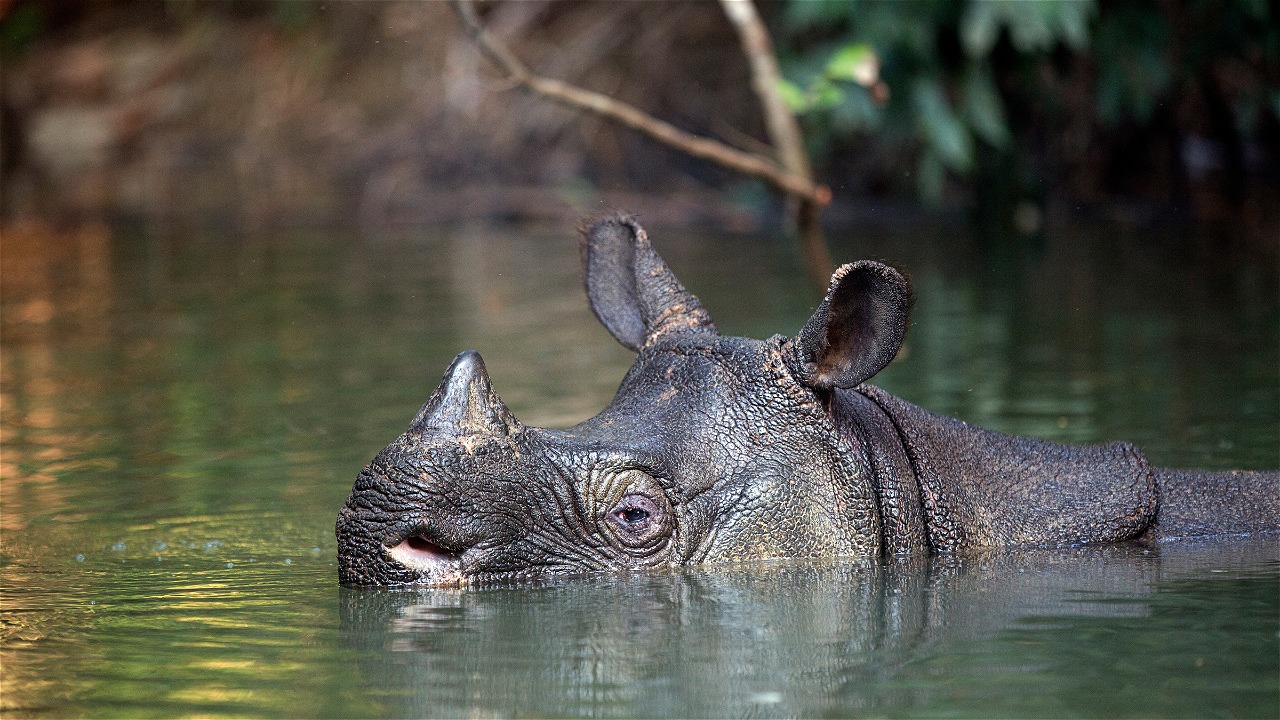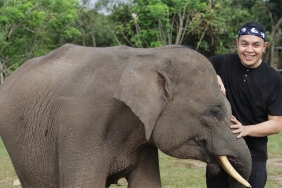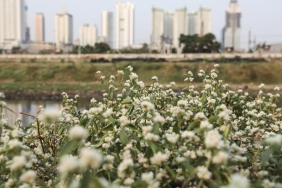MEET THE SHY JAVAN RHINO
By: Gita Alvernita
In commemoration of World Rhino Day 2017 which falls on September 22, 2017, WWF-Indonesia held Rhino Comic Strip and Run Rhino Run competitions. From the Rhino Comic Strip competition, five winners were selected and Run Rhino Run selected two winners with the prize of a trip to the Javan Rhino habitat in Ujung Kulon National Park, Banten. The two winners of the Run Rhino Run are M. Irfan from Jakarta and Sugianto from Pasuruan. Meanwhile, the winners of the Rhino Comic Strip are Adetya Cakrawala, a young man from Malang who works as a freelance; Linny Wibisono who works in graphic design from Bekasi; Lasmi Marbun, a student of the Faculty of Psychology UI; Syafrizal Ulum, a graduate student of the Faculty of Biology UGM; and Firmansyah, a webtoon illustrator from Bandung.
The trip was conducted on November 12-14, 2017 to visit the Javan Rhino's home on Handeuleum Island, which is included in the Ujung Kulon National Park.
On the first day, the winners were invited by the WWF Ujung Kulon team represented by Gita Alvernita, Oji Paoji and Rendra Kusuma to the Ciwisata Gallery, Cinibung Village located in Kertajaya Village to see the Javan Rhino wooden sculpture craft activities. During the visit, Mr. Mardi, as the head of the Ciwisata group, and Oji Paoji explained about WWF Ujung Kulon's role in involving local communities to spread the issue of Javan Rhino conservation through Javan Rhino wooden sculpture crafts. The Ciwisata group was formed in 2012 as an effort to display and market handicraft products while the rhino statue handicraft development has been started since 1996. WWF Ujung Kulon initiated the formation of this group of craftsmen, and currently the Ciwisata group has developed its business independently without intense supervision from WWF Ujung Kulon.
During this visit, Mr. Mardi assisted by his two colleagues showed the process of making rhino statues, starting from the carving process, making batik patterns, to the batik process of rhino statues. The winners also got the opportunity to carve and batik the rhino statue.
The next day, the winners left for one of the Javan Rhino's original habitats, Handeuleum Island. The trip was taken by boat for two hours. On the way to Handeuleum Island, the winners were able to see directly from a distance Mount Krakatau, which is still active and can erupt at any time, thus potentially threatening the existence of Javan Rhinos in Ujung Kulon National Park.
Ridwan Setiawan or better known as Abah Iwan Podol, who is also the Species-WWF Ujung Kulon coordinator, led the tour on Handeuleum Island. Arriving on the island, the winners were invited by Abah Iwan accompanied by Kang Ade Maman, a TNUK officer, down the Cigenter River on the TNUK Peninsula using a canoe. During the paddle, Abah told the winners about the Javan Rhino. Abah also showed them the Javan Rhino tracks visible from the plant openings on the banks of the Cigenter river. According to Abah and Kang Ade, these are old tracks and no new tracks have been found in this river search. Abah Iwan also told us about the behavior of Javan Rhinos and what things threaten the existence of Javan Rhinos in TNUK, such as langkap plants that grow massively and are invasive, thus reducing the amount of food for Javan Rhinos.
After canoeing down the Cigenter River, the winners were invited to the Javan Rhino monitoring site, where many camera traps were installed there. They were also given knowledge on how to install the camera traps. Abah explained that in monitoring using camera traps, the team can determine the population size of Javan Rhinos from analyzing video images from these cameras. After the simulation, Abah also explained that the Cigenter pasture is a banteng residential area. "Banteng, which are grazers or grass-eaters, can turn into browsers or scrub-eaters if there is no more grass in TNUK due to the forest floor being dominated by langkap plants. This can trigger foraging competition between Javan rhinos and bantengs," Abah explained. In addition, Abah told me about the Lantana camara plant which, if eaten by rhinos continuously, can cause chronic liver damage.
In addition to going down the Cigenter river, the winners were also given education on the importance of mangroves and several types of mangroves in TNUK. Mangroves are important as wave breakers, abrasion preventers, wind preventers in the west season that hit the island, as shelters for small fish and carbon sinks. In addition, if mangrove leaves fall into the sea, they can decompose into phytoplankton with nutrients that are good for fish in the sea.
In the evening, the WWF Ujung Kulon team played a video of the Javan Rhino to introduce the Javan Rhino directly to the winners, and then continued with a discussion. During the discussion, the winners enthusiastically asked various questions about Javan Rhinos, ranging from monitoring Javan Rhinos, inbreeding depression to the formation of a second population.
The next day, the winners continued their activities on Badul Island. Snorkeling as well as monitoring the Revive the Reef activities carried out by local communities were the activities of the day. There, the winners had the opportunity to see "Badul Rhino", which is a Javanese Rhino statue in the sea adjacent to the coral reef rehabilitation site. There, Kak Nina, one of WWF-Indonesia's volunteers, shared the importance of community empowerment programs for the success of conservation programs such as those carried out by local communities through Revive the Reef. She also added the importance of disseminating information related to environmental awareness that can be done by the winners through their own communities or neighborhoods.
The winners admitted that initially they did not know much about the Javan Rhino. This trip was an opportunity for them to get to know the shy animal better. They said that this was a very valuable experience.





